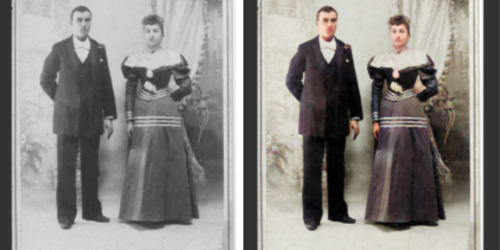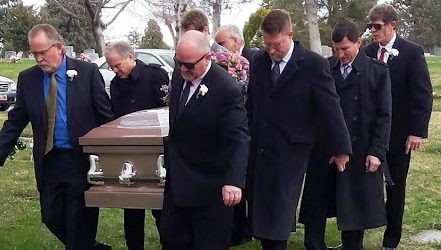Who’s Interviewing You? How to Tell Your Story
 There are many instances where someone asks us something about our past.
There are many instances where someone asks us something about our past.
It may be a new found friend or our children and grandchildren, with such questions as, “What was it like?” or “How did you two meet?” They usually are not seeking for one-liners like “It was quite difficult,” or “We met at high school.” Rather, they want stories from us. They want to connect with us. They want to know how we overcame challenges, such as school drama, romances, working at a job, and even dealing with pandemics. They want to know how we became the persons we are.
We all have inclinations to record or tell our story, but it can be very difficult to know where to start or how to go about it. One way you can do that is by interviewing yourself. Here are some steps to do just that:
Step 1: Set Some Time Aside
In a world full of demands and distractions, it is important to set time aside for your interview. Make sure to schedule a consistent time every week to write or record. The time does not have to be long; you can take anywhere from 5 minutes to half an hour. Once you figure that out, keep your commitment to that time period. This is your time to tell your story and all the time you spend on that will pay off in the long run.
Step 2: Find a Quiet Place
In addition to making time for yourself, you need to also find a quiet place with little to no distractions. Create a space in your home or go to a secluded spot where you can focus on recording your story. Make sure to let others know that you will be busy during that time and that you would like to have a quiet environment while you are recording your thoughts.
Step 3: Decide How to Record
When it comes to preserving your history, it depends on how you want to present yourself. Some people enjoy writing their stories by hand, or by typing it on a computer, as it gives them more control over their thoughts and how they are portrayed. Others prefer to make audio recordings and just talk their way through. However you want to record yourself is up to you. After all, you’re the narrator of your own story, and you get to decide how to best present it to your audience!
If you choose to hand-write your story, make sure to keep it in a journal or notebook with a sturdy cover. This will ensure that its contents are protected and preserved much longer. As a side note, don’t worry about whether your handwriting is good enough. It will actually help the stories feel more authentic and personal.
If you choose to record with audio, you can use a smartphone with the help of recording apps. When considering which app to use, make sure that your recordings are easy to access and store. For example, the FamilySearch Memories App is one good resource because you can record your voice, and it even offers prompts. You can also record with pictures by opening one on FamilySearch and clicking “Record a Memory” at the bottom. However, if you want to store your recordings elsewhere, you can open a recording, click the Actions tab, and select Download. Another option is to buy a recorder from an electronic store that can plug into your computer.
If you chose the latter, make sure that you have backups of your stories kept in secure spaces. This may involve scanning your handwritten stories and making duplicates of documents and audio files. The Family History Guide has some excellent resources for keeping your files safe and secure: see https://www.thefhguide.com/project-3-memories-an.html and https://www.thefhguide.com/project-2-memories.html. Furthermore, you can always ask family members for help with any technological problems. This can be a great bonding moment between the two of you as you seek to preserve your stories.
Step 4: Create a List of Questions
Questions are key to writing your story. They can jog your memory and help you recall important moments in your life. When you are preparing your list of questions, make sure that they are open-ended and relevant, such as “What is your earliest childhood memory?” and “What does your family enjoy doing together?” When you record your answers, don’t be afraid to go beyond the questions. If answering the question reminds you of another related incident, feel free to mention it in your writing or recording. Seize the opportunity! If you need help with questions, The Family History Guide has excellent resources for you to use: https://www.thefhguide.com/project-2-memories03.html
Interviewing yourself can be somewhat difficult to start. Life happens and not everything goes as well as you might like it, including random noises during recording sessions. However, as you make the time and effort to record your memories, you will appreciate your life more. It will help you to preserve all the joyful memories that you have had with others. It also can help you in resolving conflicts and challenges that you may have encountered. More importantly, your stories will help your children and grandchildren understand and appreciate how you came to be. Your stories can be sources of inspiration and comfort when they need it.
So, schedule yourself an appointment and get recording. Your story awaits!





